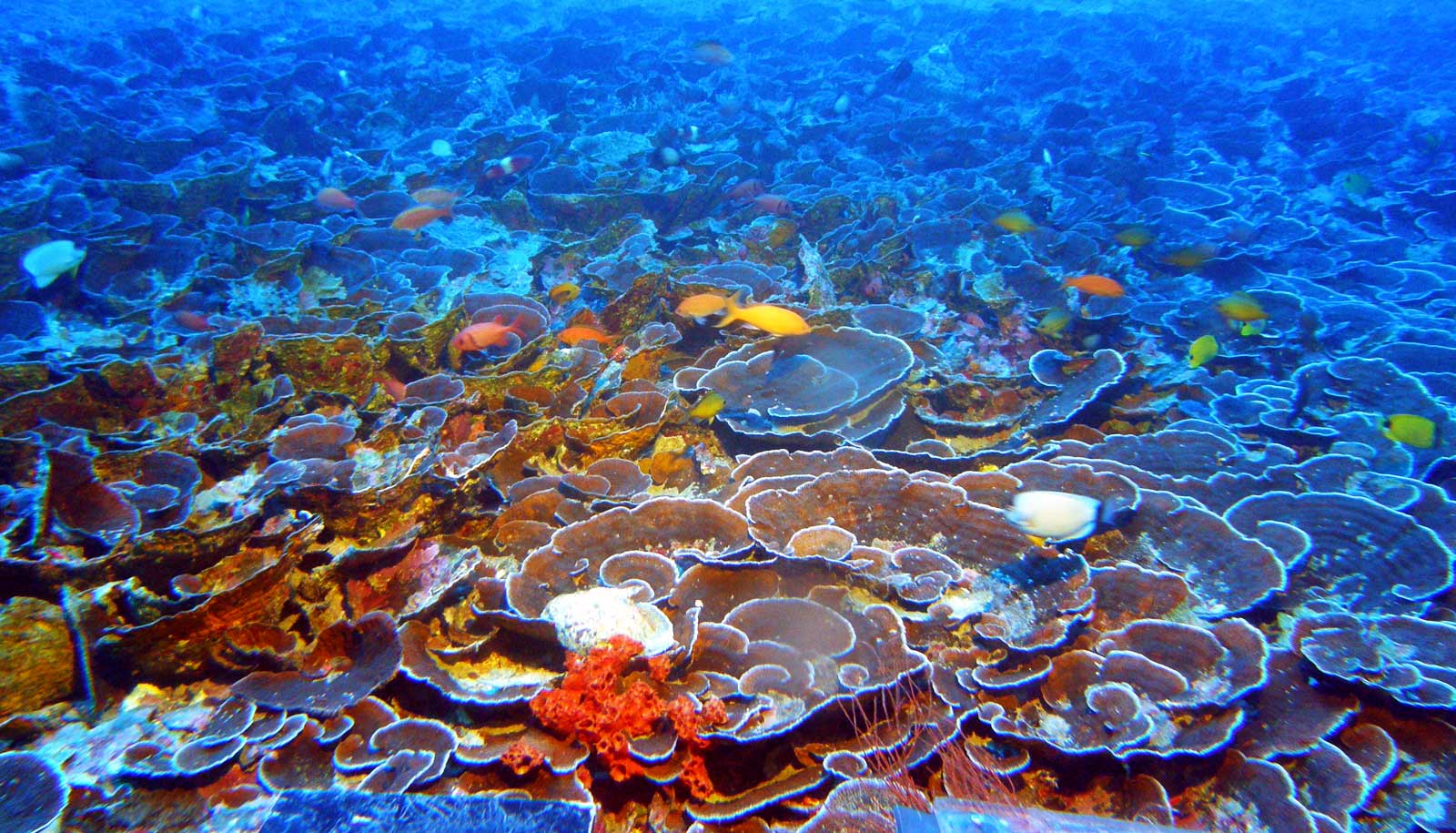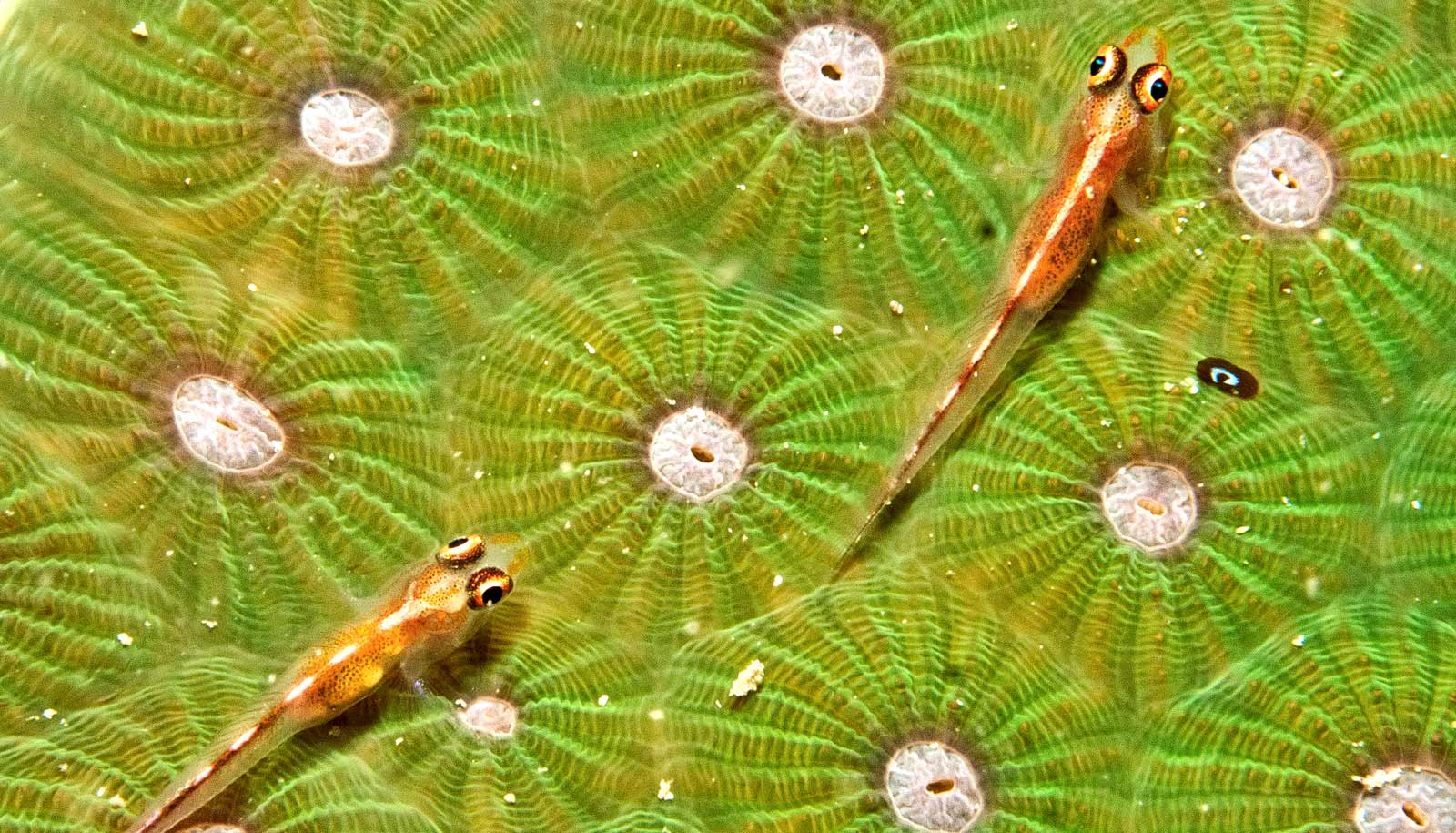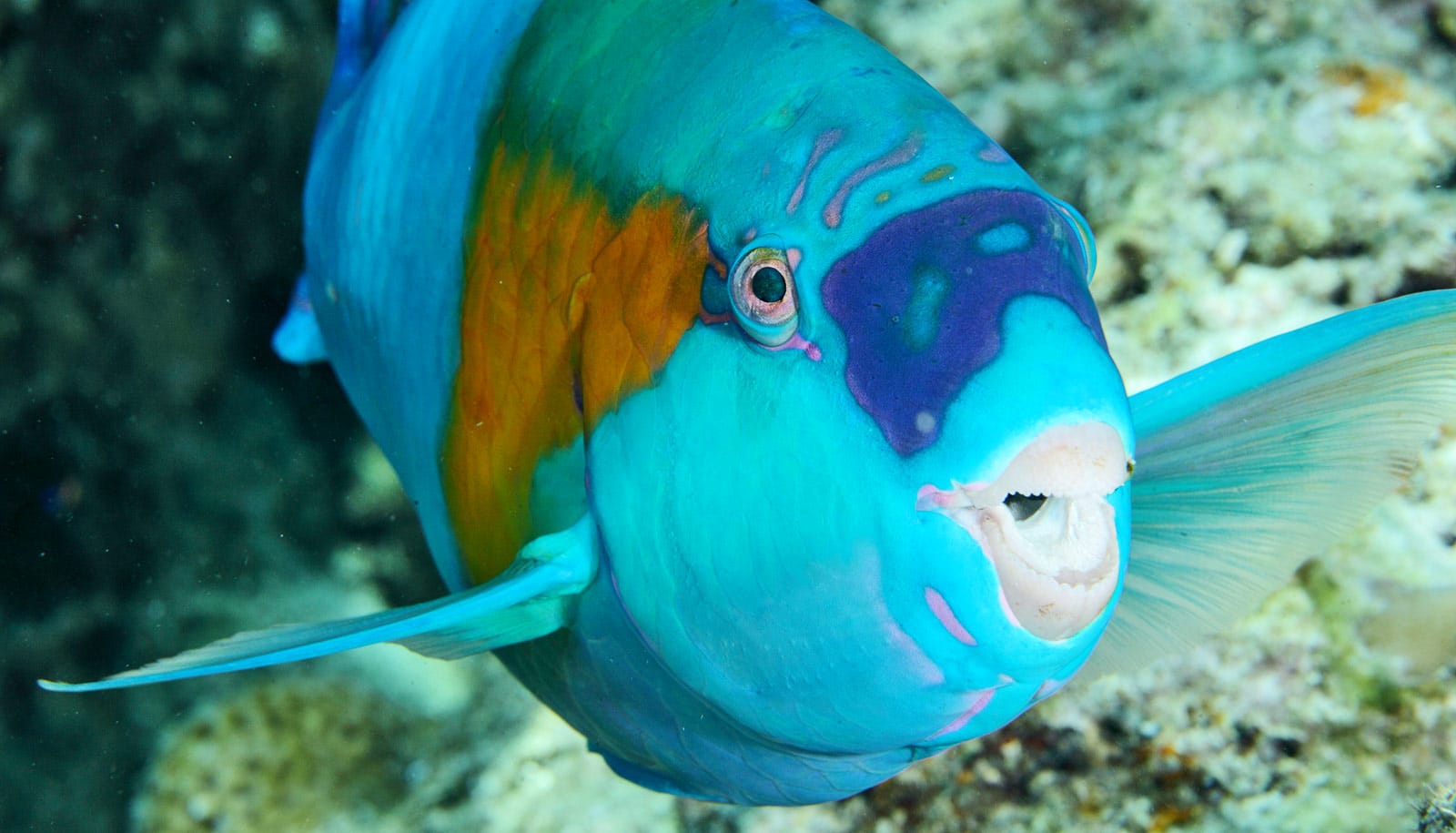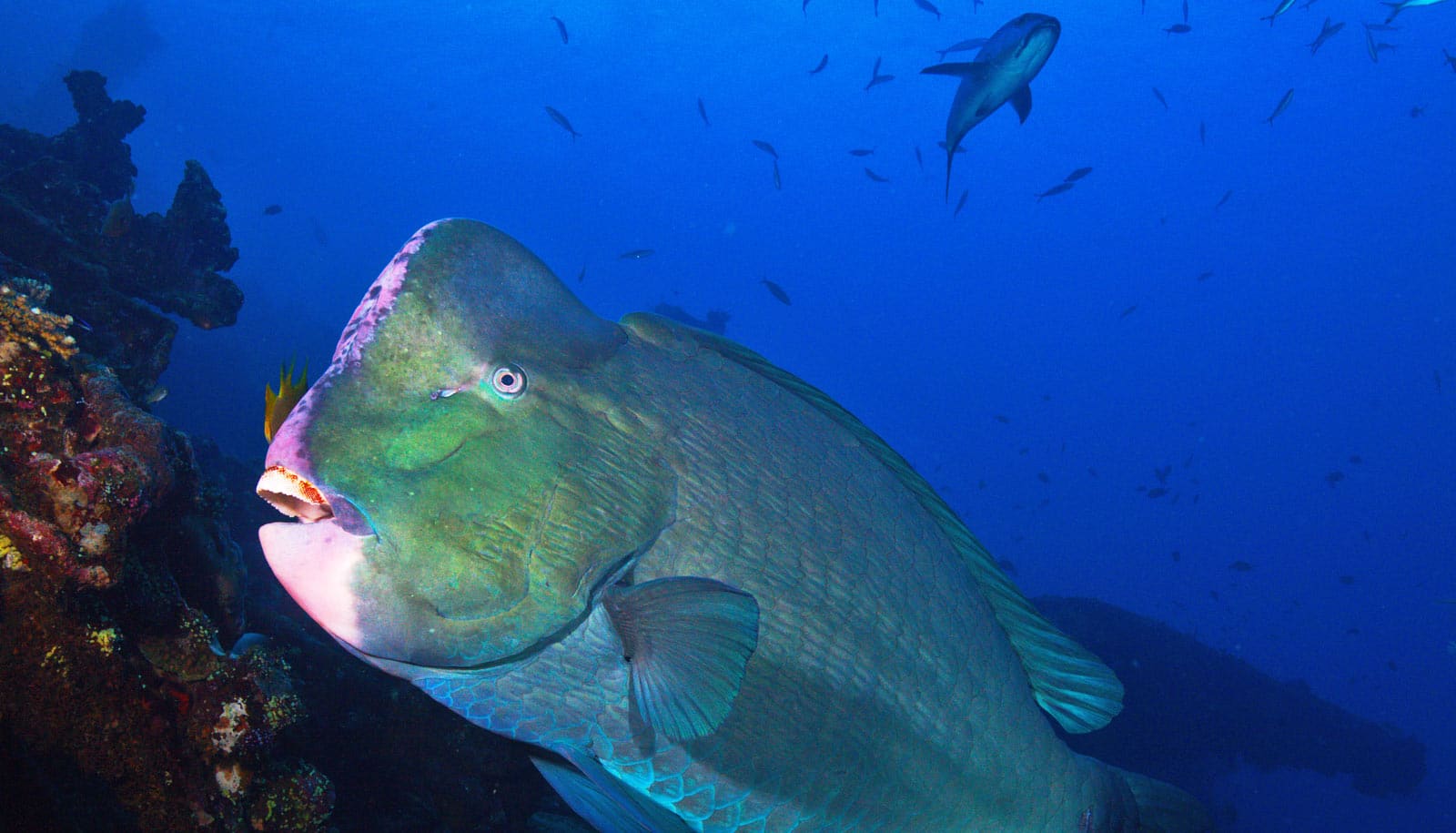A series of submersible dives to ocean depths about 100 to at least 500 feet down found coral living where little to no light breaks through, researchers report.
These deep areas, known as the mesophotic zone, span the world’s oceans and are home to extensive coral reef communities, though scientists know little about them because of the difficulty getting there.
Now, researchers have explored the largest known coral reef in the mesophotic zone, located in the Hawaiian Archipelago. There, they documented life along the coral reef, finding a surprising amount of coral living in areas where light levels are less than 1 percent of the light available at the surface.
“Because mesophotic corals live close to the limits of what is possible, understanding their physiology will give us clues of the extraordinary strategies corals use to adapt to low-light environments,” says lead author Jacqueline Padilla-Gamiño, an assistant professor in the School of Aquatic and Fishery Sciences at the University of Washington.
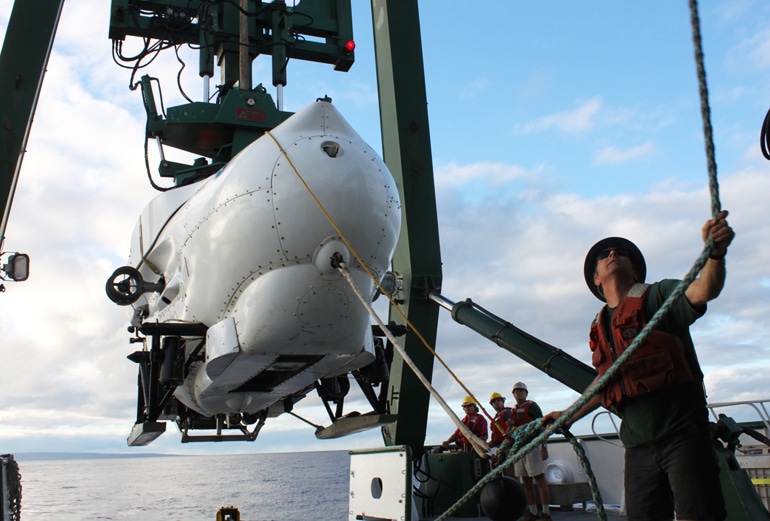
Coral death
Knowing how these deep coral reefs function is important because they appear to be hotspots for biodiversity, and home to many species found only in those locations, Padilla-Gamiño says.
Additionally, close to half of all corals in the ocean have died in the past 30 years, mostly due to warm water temperatures that stress their bodies, causing them to bleach and eventually die. Scientists have documented this, but mostly in shallower reefs. More information about deeper reefs in the mesophotic zone is critical for preserving that habitat, researchers say.
“Mesophotic reefs in Hawaii are stunning in their sheer size and abundance,” says coauthor Heather Spalding of the College of Charleston. “Although mesophotic environments are not easily seen, they are still potentially impacted by underwater development, such as cabling and anchoring, and need to be protected for future generations. We are on the tip of the iceberg in terms of understanding what makes these astounding reefs tick.”
Deep dives
Padilla-Gamiño was on board during two of the eight submersible dives off the coast of Maui that took place from 2010 to 2011. Each dive was a harrowing adventure: Researchers spent up to eight hours in cramped quarters in the submersible that was tossed from the back of a larger boat, then disconnected once it reached the water.
Once in the mesophotic zone, they collected specimens using a robot arm, and captured video footage and photos of life that humans had rarely seen.
“It’s a really unbelievable place,” Padilla-Gamiño says. “What is surprising is that, in theory, these corals should not be there because there’s so little light. Now we’re finally understanding how they function to be able to live there.”
Collecting coral samples and analyzing their physiology showed researchers that different corals in the mesophotic zone use different strategies to deal with low amounts of light.
For example, some species of corals change the amount of pigments at deeper depths, while others change the type and size of symbionts—microscopic seaweeds living inside the tissue of corals, Padilla-Gamiño says. These changes allow corals to acquire and maximize the light available to perform photosynthesis and obtain energy.
Mysterious mesophotic corals
Additionally, the corals at deeper depths likely eat other organisms like zooplankton to increase their energy intake and survive under very low light levels. They probably filter feed to do this, Padilla-Gamiño says, but researchers need to do more work to know for sure.
The researchers hope to collect more live coral samples from the mesophotic zone to study in the lab how the symbionts and the corals they live inside, function.
“The more we can study this, the more information we can have about how life works. This is a remarkable system with enormous potential for discovery,” Padilla-Gamiño says “Our studies provide the foundation to explore physiological flexibility, identify novel mechanisms to acquire light, and challenge current paradigms on the limitations of photosynthetic organisms like corals living in deeper water.”
Additional coauthors are from the University of Hawaii at Mānoa; the University of California, Berkeley; Villanova University; Salisbury University; and the Hawaii Institute of Marine Biology.
The National Oceanic and Atmospheric Administration and the National Science Foundation funded the work, which appears in Limnology and Oceanography.
Source: University of Washington
